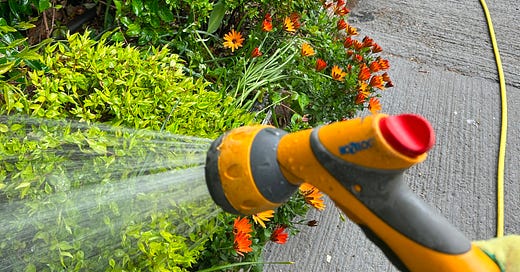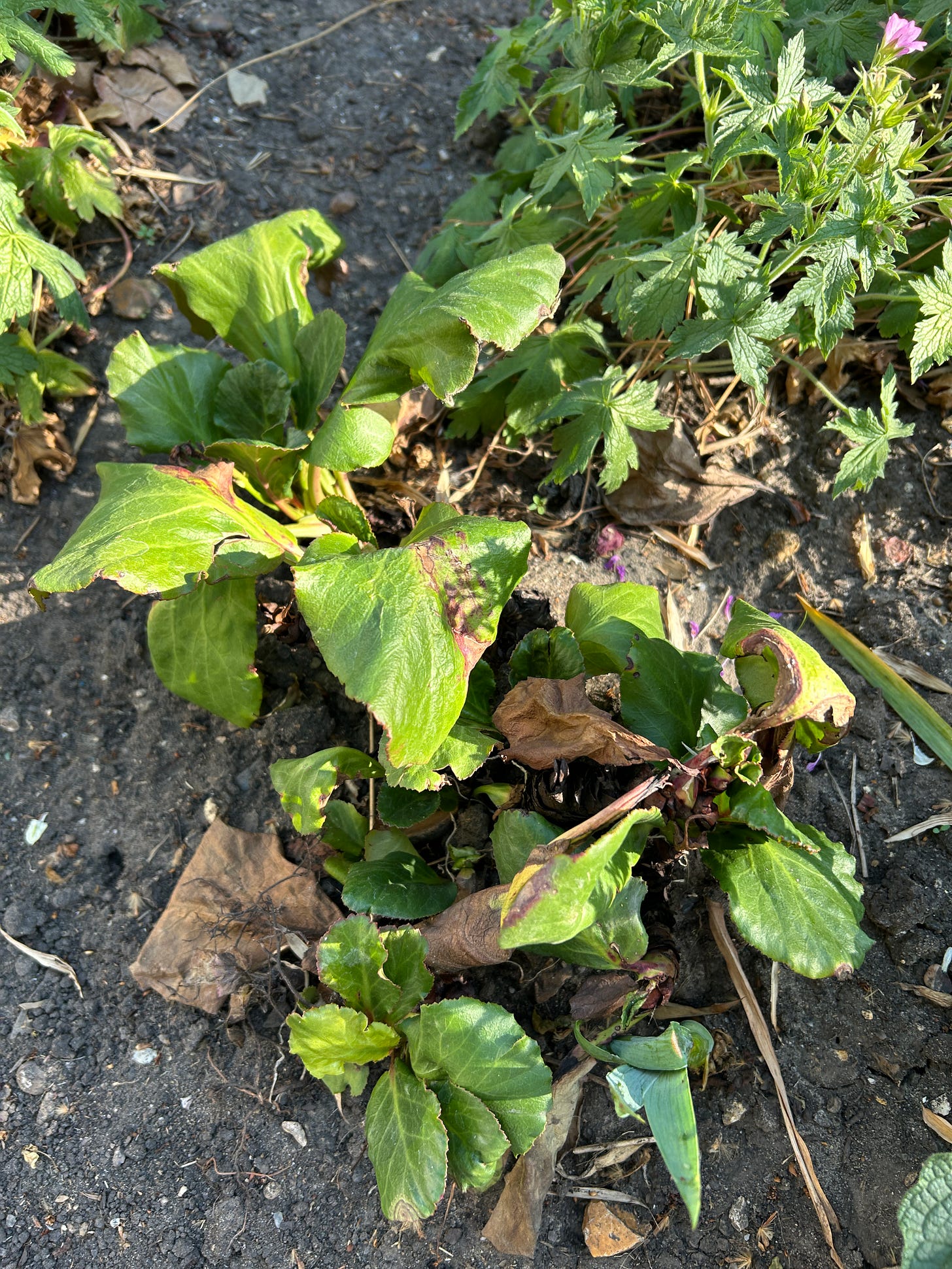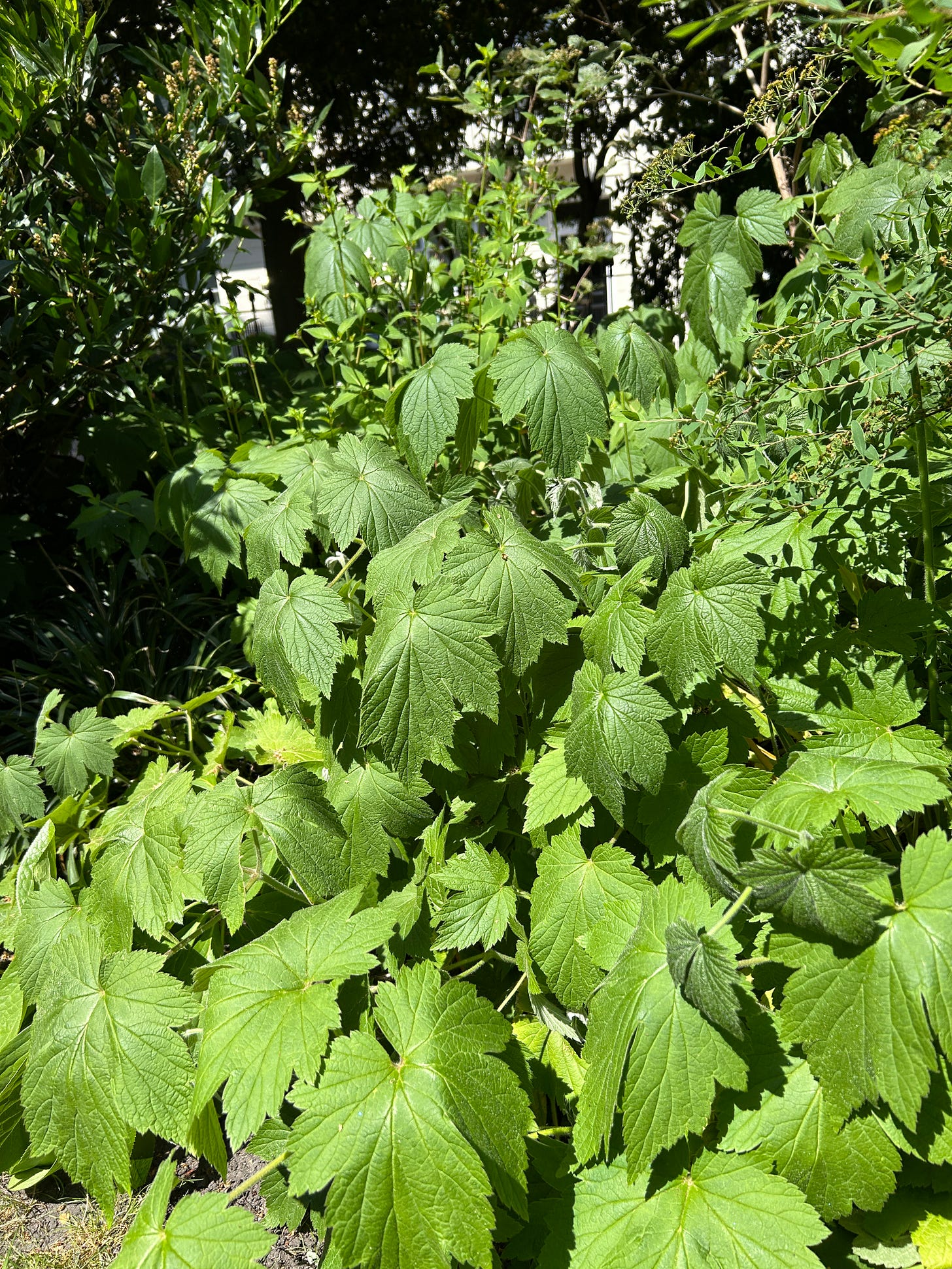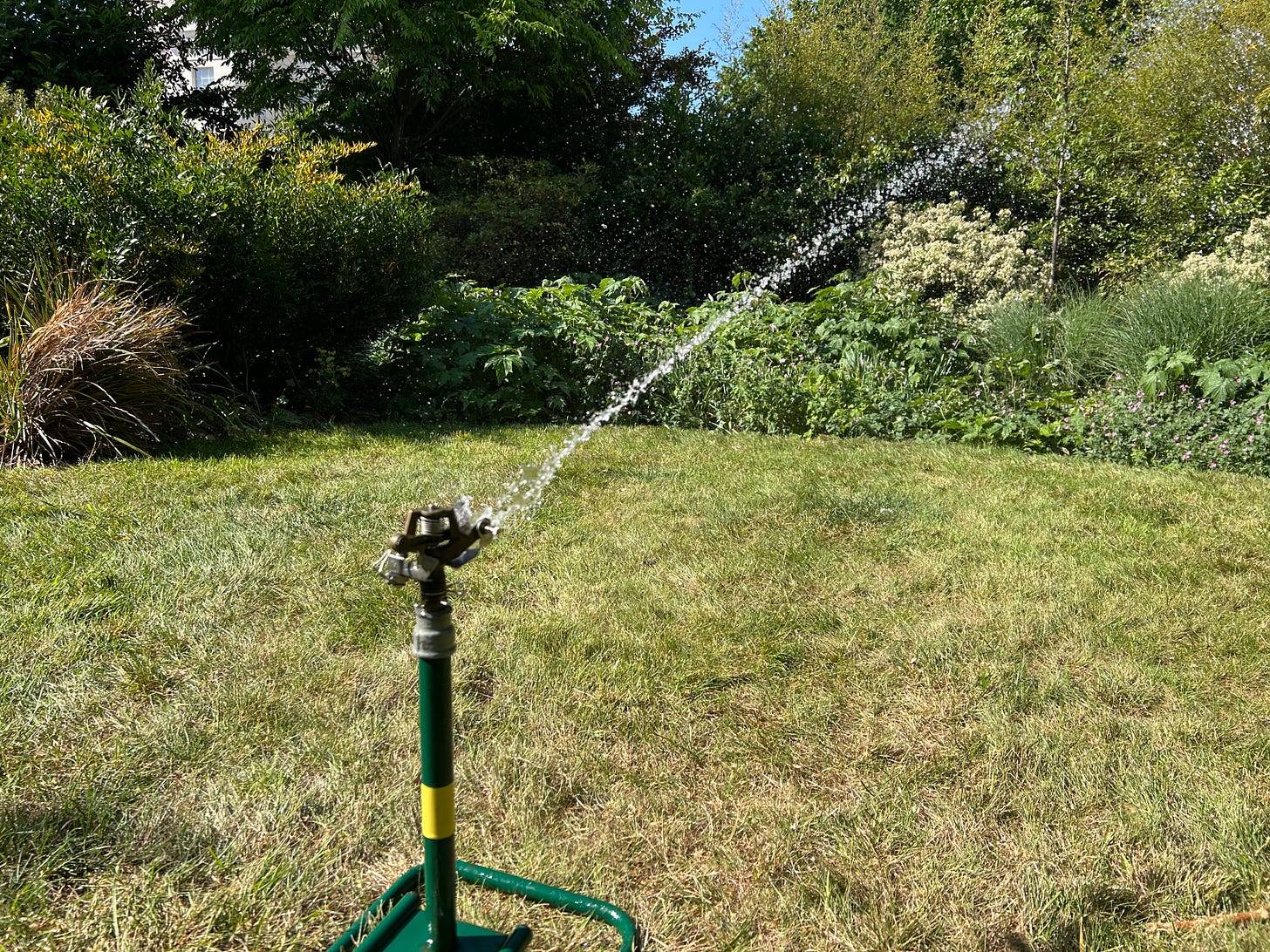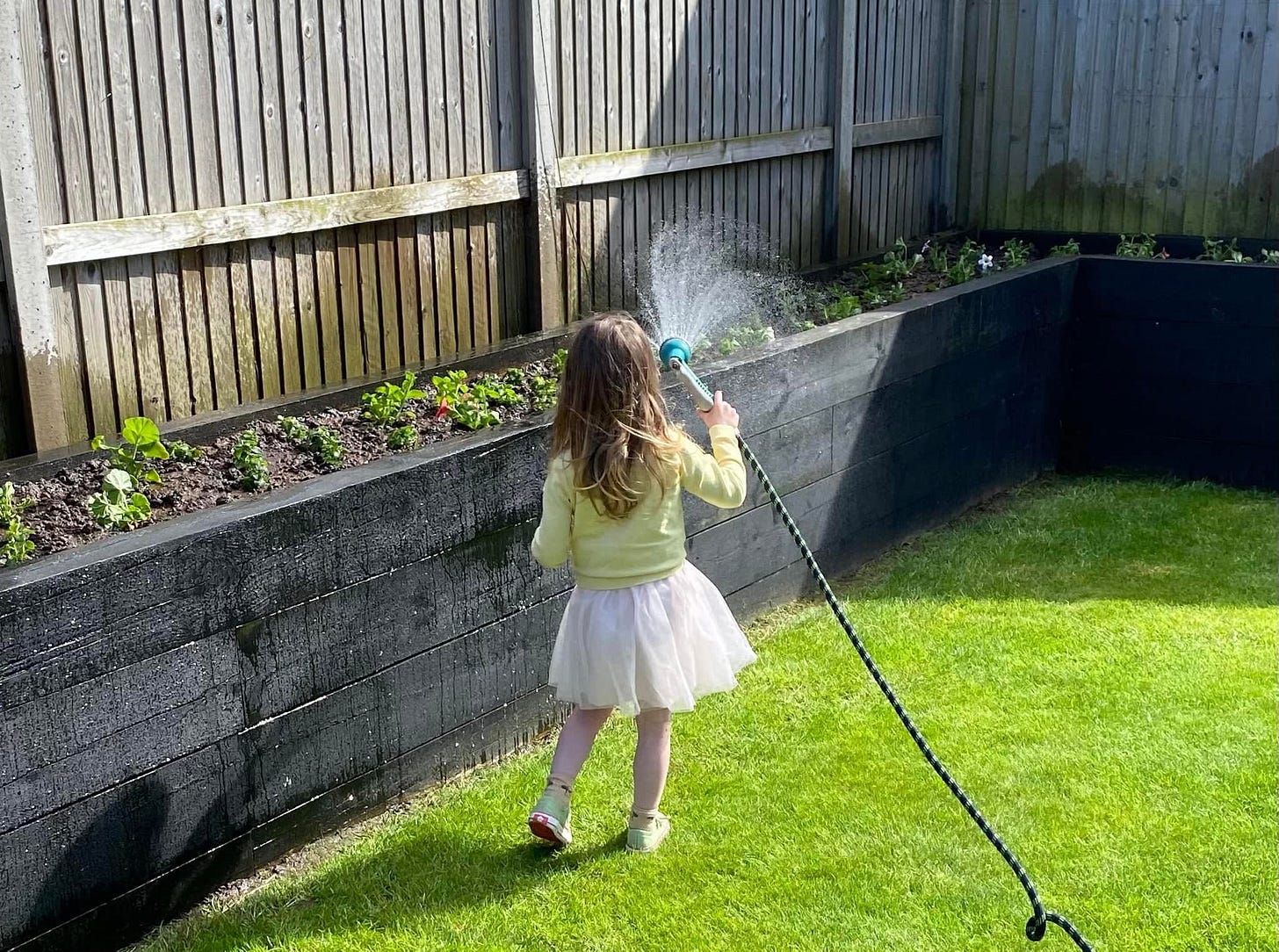In the UK we are on track for it being the driest Spring on record, and with no sign of rain anytime soon, it’s time to get the hoses out and start watering your plants.
The Signs of Wilting
It’s important to recognise the early signs of wilting of plants. If you wait until the leaves have gone brown and crispy then you would have left it too late.
The early signs include floppy leaves and bent stems on most herbaceous and deciduous plants. On evergreens the only initial sign is them starting to drop their leaves.
In extreme heat conditions some plants like geraniums will show signs of wilting even though there is plenty of moisture in the ground. So always check the ground to see if there is water around the roots. You need to push your thumb into the ground by at least an inch (up to your knuckle) and it should fell cool and moist.
Tips On Watering
Here are my top tips for keeping your plants hydrated during any heat waves.
Plants get stressed when the soil conditions move from extreme states, such as between drought and then flood. It’s best to water plants little and often, so I find a daily routine of watering a little works best.
Know which of plants need a little more water than others. Some plants such hydrangeas need a lot more water than others like lavenders. So when watering make sure those get your focus.
Sprinkles are a time saver and can cover a large area. However, they are wasteful of water as they will water bare soil and plants that are fine. So if you have a limited supply of water and the time to do it, spot watering the plants who need it is much more efficient.
Remember that plants take water from the roots not the leaves, so water the base of the plant around the stem and that covers the whole root area. For trees, pay special attention to the drip-line about the canopy. This is where the plant naturally takes in most of its water.
If you haven’t already, mulch your beds and pots. This helps to trap moisture in the ground or compost and stops it evaporating. Please make sure you add mulch when the soil is already damp or the mulch can then stop enough water getting through to the soil. You can learn more about the different types of mulch here.
Mad for Mulch
·Let’s talk about mulch. Mulch is amazing stuff and is an essential tool for all gardeners. Not only does it make our lives easier, but it can also help plants and improve your soil conditions. For those who don’t get excited as me about the stuff, mulch is basically anything that you cover your flower beds with.
There is a big debate on whether to water lawns. Grass can recover if left to turn brown in dry periods. However, green grass absorbs a lot of the sun’s energy and can dramatically reduce your garden’s overall temperature. A brown lawn can radiate heat and mean your other plants may suffer. But if you do, the shorter the lawn, the more exposed the soil is to evaporation. So if you want to keep your grass as green as possible, mow your grass less often or at a higher setting.
Don’t water during the hottest part of the day. The water will evaporate more quickly and leave less for the plant to use.
DO NOT OVER WATER! Though it is tempting to just keep chucking water at your plants, roots need oxygen to function and so a plant can drown. And just to be annoying, the signs of over watering in a plant look exactly the same as a plant wilting from drought. So the soil is the best gauge to whether it needs watering, and it needs to be cool and damp, but not water-logged.
And if you’re lucky enough to have a little helper who loves to water, then let them get stuck in for you whilst you enjoy the sun.

